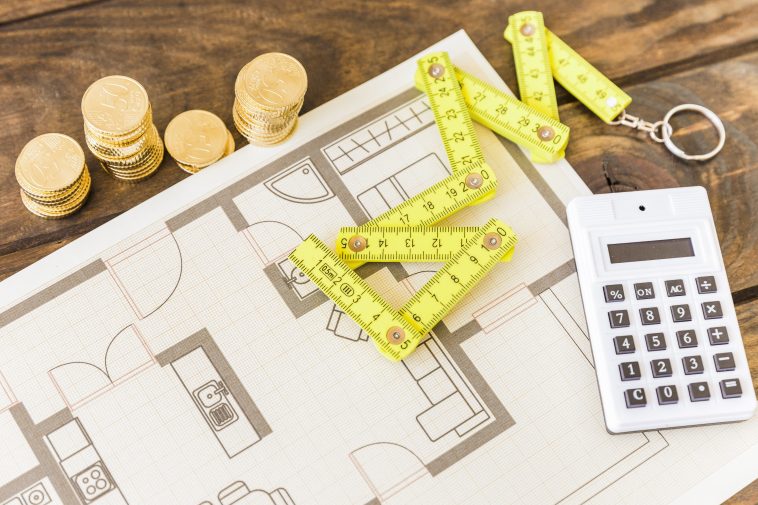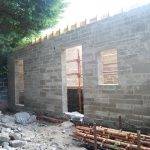Estimating the cost of a new build or renovation can be overwhelming. This guide outlines where to start when budgeting your project.
In this article we cover:
- Tradeoffs between cost, quality and speed
- Costs roadmap
- Bill of quantities versus take-offs
- Average build costs
- Builder’s merchants costings
- Costing an extension
- Contingencies
- Taking into account price variations
- Labour costs
- Cost engineering or how to reduce costs
Building on a budget
It is possible to build on a modest budget, but design choices often increase costs. Every upgrade adds up, and budget overruns typically result from incremental decisions. Self-builders aiming for their dream home may prioritise quality over budget control.
This guide breaks down how projects are costed to improve accuracy in estimating build expenses.
Previous generations built efficiently, using simple designs that remain cost-effective today. In the 1940s-60s, most UK homes followed a rectangular layout, either as a single-storey bungalow or a standard two-storey house. These shapes minimise costs by reducing material use and construction complexity.
[adrotate banner="58"]Keeping a wish list is important, but accurate costings and good design help manage stress and ensure satisfaction with the final result.
Where to start when costing your build: Costs roadmap
In the UK, projects typically follow the New Rules of Measurement (NRM), published by the Royal Institution of Chartered Surveyors (RICS). The NRM series provides a structured approach to breaking a project into cost elements.

Bill of quantities vs take-offs
Quantity surveyors specialise in pricing projects. They will produce a bill of quantities, which is a fully detailed shopping list of what you will need to build your house based on your planning drawings or, for greater accuracy, on your construction drawings. Down to the number of nails.
Alternatively, you can get an estimate of what materials you will need to build your house straight from your builder’s merchant in what’s known as a take-off. This is a good option if you’re building a simple shape of house, to standard lengths. Or you could take your plans and try to work it out yourself but that’s not as straightforward as it seems.
When estimating quantities, there will be an allocation for wastage.
Average costs
Averaging construction costs is unreliable. While common in the industry, few projects match the average cost. Many self-builders secure planning permission only to find their project exceeds their financial limits.
Quantity surveyors often get asked for average build costs. However, no two projects are identical, making averages an inaccurate budgeting method.
Builder’s merchants
If you plan to go direct labour, as in not hire the one builder to manage the project for you, opening a self-build account at your builder’s provider is essential. Check if there are delivery charges, what the
payment terms are, and get to know your rep as s/he will be able to advise and give trade discounts and help organise any returns if you have some materials left over.
Agree to a unit price for the most commonly used materials in advance, so you’ll know what you’ll get charged every time you place an order.
Where to start costing an extension
An extension often costs as much per square metre as a new build. Additional costs include connecting to the existing structure, foundation work and protecting adjacent buildings. Buried service pipes may also require rerouting, increasing expenses.
Many homeowners also update existing features to match the new build, such as replacing internal doors and flooring.
Contingencies
Unexpected costs arise due to risk factors, oversight or poor planning. Setting aside contingency funds prevents financial strain. Typically, 10-15% of the budget is reserved for new builds. Renovations, particularly in older homes, require up to 30% contingency.
Price variations
Costs vary based on location, materials and labour. Some materials, like timber, have consistent pricing, but others fluctuate by up to 20 per cent. Labour rates can differ significantly, impacting total build costs by as much as 50 per cent between regions.

Labour costs
A builder will typically charge around £200 a day, but they’ll probably have a labourer helping them, which adds another £100 a day or so.
But it’s not just builders you’ll need to get a house finished. Depending on what your builder can do, you might also need roofers and joiners for the main structure.
A scaffolder might be needed too, and you’ll definitely want a carpenter for things like fitting staircases, plus a plasterer to finish off the walls and ceilings. A specialist company might take care of the windows.
Electricians and plumbers will also come in at different stages. They usually charge more than general builders, with rates between £120 and £250 a day.
Cost engineering
Cost engineering is a fancy way to say cost cutting. The key is to do it at the design stage, when you can adjust the plans and determine what ramifications those decisions will have on every aspect of
construction. The changes will unavoidably have a knock on effect.
Because they’re expensive, avoid conservatories and limit the number of windows you have (also, more windows mean more heat loss/gain). No stove or chimney.
These changes are often done when you’re at the tender stage, negotiating with the builder you plan to hire. Common cost engineering moves include simplifying the roof design, reducing house size by reducing circulation spaces and making the house overall more compact. But these are likely to require
resubmitting for planning permission.
Builders tend to be good at cost cutting but you also need your architectural designer there to make sure those decisions don’t compromise on the aesthetics, quality of finish, or specification.
Internal changes shouldn’t require resubmitting for planning permission. Some cost savers there include straight stairs and minimum circulation areas, no fancy kitchen or bathroom, and standard off the shelf solutions which will probably look like what they are.
Take the time to do your research, bargains can be found for things like sanitaryware and kitchens. Consider off the shelf windows and doors, simple lighting and avoid expensive finishes. Shop around and don’t be afraid to haggle, you’ve nothing to lose.




